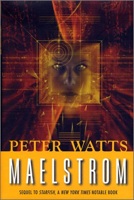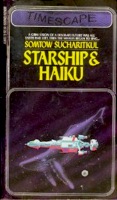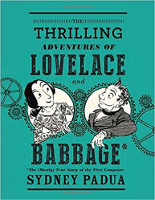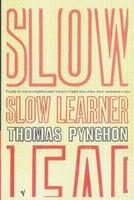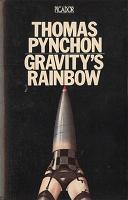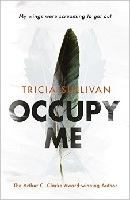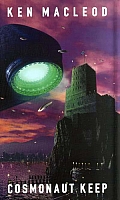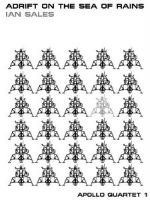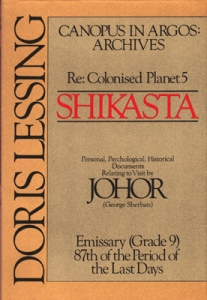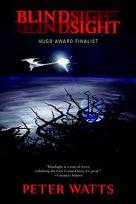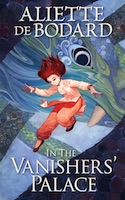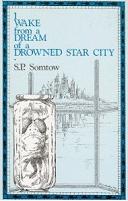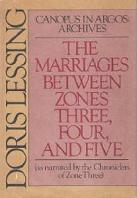 The Marriages between Zones Three, Four, and Five is the 2nd book in Doris Lessing's Canopus in Argos series – a complex and fascinating cycle of SF books, considered to be some of her best work by the Nobel-winning author herself.
The Marriages between Zones Three, Four, and Five is the 2nd book in Doris Lessing's Canopus in Argos series – a complex and fascinating cycle of SF books, considered to be some of her best work by the Nobel-winning author herself.
This book appears, at least at first, much simpler, more linear, and with a much smaller scope than the first book in the series (Shikasta, to give it its short name). It deals, on the surface, with humans, their relationships, and with the society that shapes these relationships and is in turn shaped by them instead of the history of the world from prehistoric times until WWIII, set in a galaxy-spanning setting, as the first book did. There are always little hints that this is just a small part of something, that the larger setting is there, but just not focused on at the moment in the rush of emotions and conflicts.
The story setting is easily told – Al•Ith is the Queen of Zone 3, a self-centred, peaceful and egalitarian country, led by female 'Queens', with a society based on equality and communication. She is ordered, by the 'Providers' (large picture warning! Although they are never specified, explained, or described, we never see more than the actual characters see and know...) to marry the 'King' of Zone 4, Ben Ata. Zone 4 is everything Zone 3 is not – it appears, at least to Al•Ith, to be barbarian, despondent and poor, and solely based on hierarchy, war, and the army which every single male in the Zone belongs to.
You can imagine that neither of these exponents of their respective Zones are happy with this arrangement (but rebellion against the Providers is unthinkable, it appears), so they are thrown together, thrown into a personal and collective crisis, and their Zones, of which they are but an expression, are shaken up together with theri prime exponents.
There are several ways to look at the book – the simplest way is to take it as a straight forward story of the female and the male, incompatible at first look, thrown together, each of them forced to learn the ways of thinking and behaving of the other, as different as these are. Love and Sex in all it's manifestations and aspects comes into play, and general human interaction – we're looking at some kind of War&Peace in a relationship, both between the protagonists and their Zones. Essentially, from that point of view, this is one big expose on the relationship between the sexes.
Or you can look at the book as an SF story, filling in some of the gaps in the cosmological landscape surrounding Shikasta that the first book left open. So here we have another 3 (and a bit of a 4th) Zones and their relationships, plus an indication that the Zones, their connections and overall make-up, are overseen and regulated by someone to some unknown end.
I presume that a Lessing scholar would analyse the book in the light of Sufi principles, given that this was/is a major interest of Doris Lessing. I have to confess that my knowledge of Sufi stems of the Internet, mainly Wikipedia and linked sites; and whilst I can see lots of scope to interpret the book and its setting in relation to some of these areas I shall refrain from doing so – I feel that I'm not qualified, and this is not a College Essay which has to be written no matter what ;-)
The last tack that I see is to regard the book, its settings and relationships as mythical allegory on all kinds of things way beyond the simple man/woman story being told. And again, whilst I see a lot of scope to do so in the story, and the settings and relationships between the Zones (and the Providers!) I don't think that it is meant that way, and creating interpretations just for the sake of it distracts from the actual, well written and interesting book, and the fascinating and revealing interactions between the protagonists. This is great stuff, even if looked at as nothing more than the basic story.
The book is written in the 3rd person, and is being told by one of the Chroniclers of Zone 3 (as per the subtitle), and follows the protagonists for most of it, with short excursions where the unnamed Chronicler explains some details of the zones, or how people see events, or, at one point, the nature of observing and preserving of history, which I found rather interesting in a general philosophical way.
This is not an action based story, you might have gathered. The pace varies, but is generally quite measured and frequently reflective. If this is not a complete turn-off for you then I can whole-heartedly recommend the book (which can be read on its own without any issues) or the entire series; this is great writing from a great author who, in my opinion, deservedly received the Nobel price for literature (and is the only 'confessing' SF writer to have done so to my knowledge). Top stuff.
Title: The Marriages between Zones Three, Four, and Five
Subtitle: As Narrated by the Chroniclers of Zone Three
Series: Canopus in Argos
Series Number: 2/5
Author: Doris Lessing
Reviewer: Markus
Reviewer URL: http://skating.thierstein.net
Publisher: Granada/Panther Book
Publication Date: 1981
Review Date: 100911
ISBN: 0586053387
Price: UKP1.95
Book URL:
Author URL:
Pages: 299
Format: Paperback
Topic: SF
Topic: Sociology
More Doris Lessing
